
 Data Structure
Data Structure Networking
Networking RDBMS
RDBMS Operating System
Operating System Java
Java MS Excel
MS Excel iOS
iOS HTML
HTML CSS
CSS Android
Android Python
Python C Programming
C Programming C++
C++ C#
C# MongoDB
MongoDB MySQL
MySQL Javascript
Javascript PHP
PHP
- Selected Reading
- UPSC IAS Exams Notes
- Developer's Best Practices
- Questions and Answers
- Effective Resume Writing
- HR Interview Questions
- Computer Glossary
- Who is Who
Data Objects, Attributes and Relationship in DBMS
Data Objects
Data objects refers to a collection of various attributes which are combined to make it understandable. Data object values have their own unique id, attribute and data types.
The most common type is the data table. Data objects are mostly represented in data models, which resolve with the relationship among the data objects.
Types of Data Objects
Array is a one-dimension data object. i.e, can be a single column in a table.
Example
Student
Name |
|---|
Aman |
Naman |
Monu |
Records
Records refers to a single row for every dimension in a table.
Example
Student
Name |
id |
roll_no |
branch |
|---|
Pointers
It helps in memory location of other entities in a table.
Files
It is used to confirm the correct structure of other data objects. Files help us with data integrity by taking entities having the same types.
Scalar
Scalar means single i.e. It indicates single values rather than tables,arrays and records.
Attributes
Attribute describes the characteristics of data objetct. It derives the type of entity. Every attribute has a unique data types. Attributes helps in making database searchable by organising the data meaningfully and thus provide data accuracy with clear definition of entered data in database.
Types of attributes
Simple attribute
They are simple in nature and can be further divided into sub-attributes.
Example

Composite attributes
It is made by combination of two or more simple attributes.
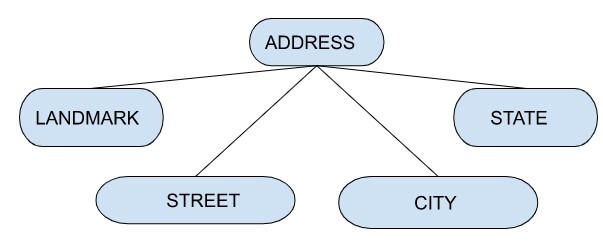
Single Valued Attribute
It can only have a single value and is used to provide a uniqueness to entities.

Multivalued Attribute
It can be used to have more than one value. Information about entities, and relationships are often stored through a multivalued attribute. Multivalued attributes also represent hierarchical data.
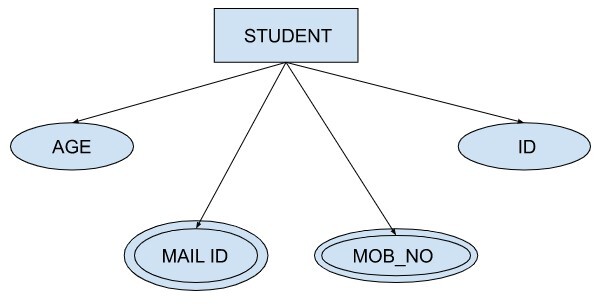
Here, mail id and mob_no are multi-valued attributes.
Derived Attributes
Derived Attributes depend upon other attributes and are not directly stored in the database.
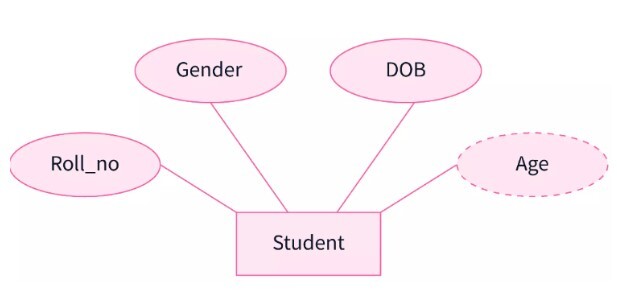
Here, age will be derived from DOB, therefore age is a derived attribute.
Complex Attributes
It consists of both composite and multivalued attributes and are used to represent relationships between entities.

Key Attribute
It is used to uniquely get the rows in a table. There is primary key and foreign key which helps connect the table.
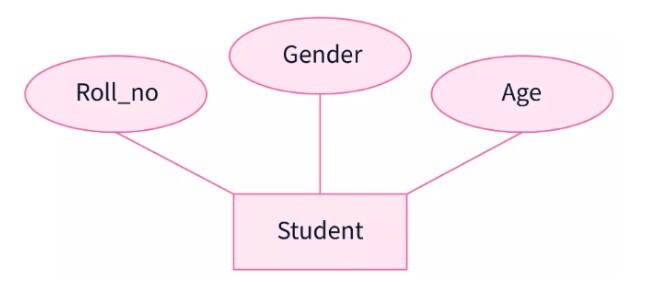
Stored Attribute
They are the attributes that are constant for an instance.
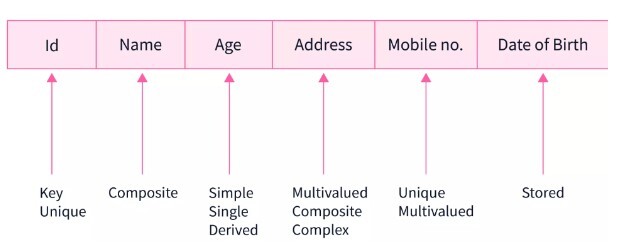
Relationship
A Relationship is where two or more tables are linked through a specific relation.
Types of relationship are ?
One-to-One(1:1)
In a one-to-one relationship,the single record of table_1 is related to the single record of tbale_2 and vice-versa.
Example ?There are two entities department and HOD. Now, every department will have only one HOD and every HOD will handle only one department.
One-to-Many
In a One-to-Many relationship, a single record of table_1 is related to one or more records of table_2.
Example ?There are two entities, HOD() and Faculty(). Now, every HOD can be of one or more than one faculty but faculty cannot have more than one HOD.
Many-to-One
In a Many-to-One relationship, multiple records of table_1 are related to a single record of table_2.
Example ?There are two entities, course() and Faculty(). Now, multiple courses can be taught by single faculty comes under this relation.
Many-to-Many
In a Many-to-Many relationship, one record of table_1 is related to multiple records of table_2 and vice-versa
Example ?There are two entities, students and courses. Now, one student can enrol in multiple courses and one course can be taken by multiple students.
Conclusion
This Article consists of three parts. First is data objects which refers to the collection of attributes to make data clear. Types of data objects are Array, records, pointer, files and scalar. Second is Attributes which refer to characteristics of data object and describe entity types. Types of attributes are simple, composite, single-valued, multivalued, derived, complex, key and stored attributes. Third is relationship which tells the relation between data objects or tables. types of relationship are one-to-one,one-to-many,many-to-one and many-to-many.

